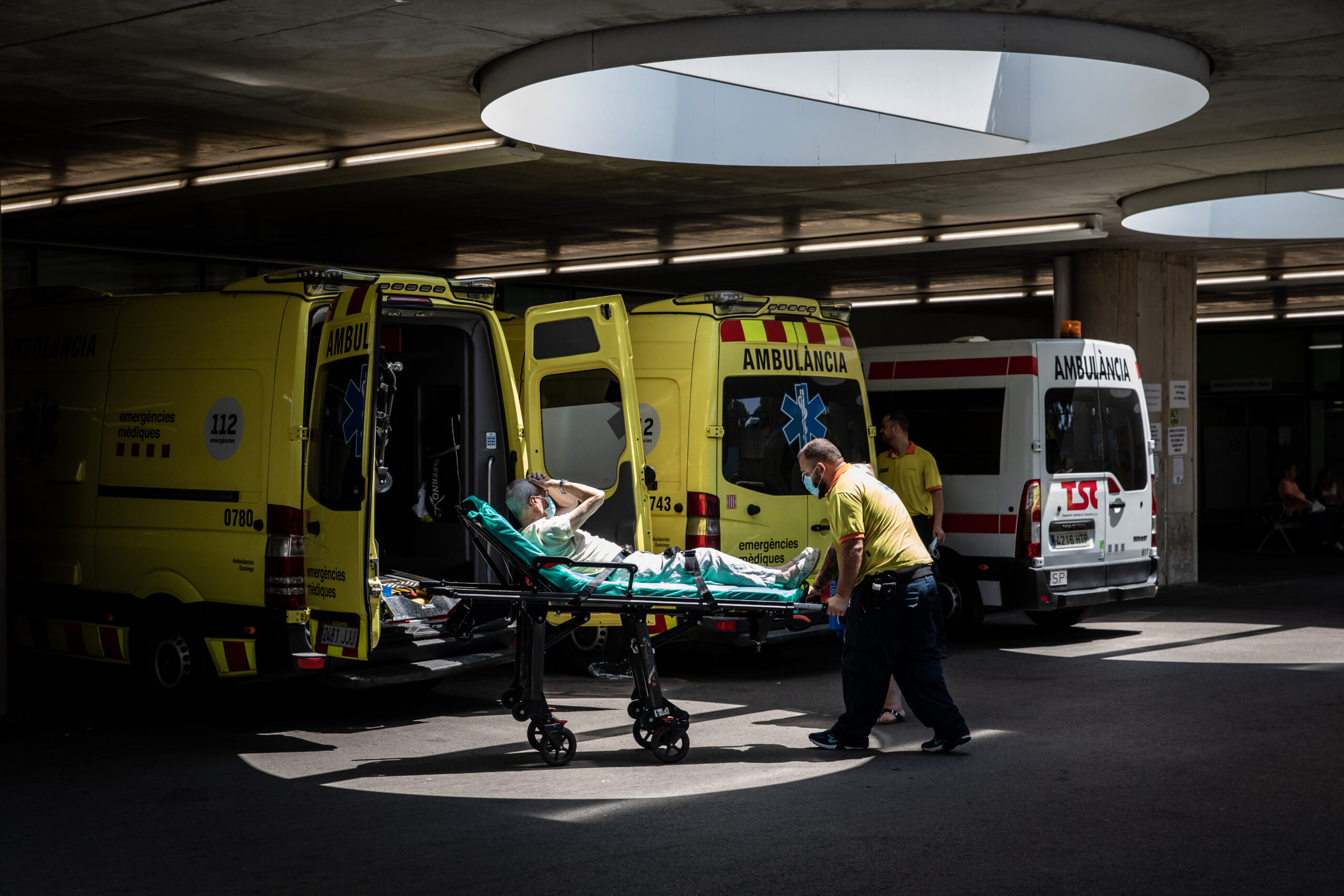Montse Aguilar was a healthy 51-year-old woman when she started her shift cleaning streets in Barcelona at around 2:30 p.m. on June 28. The Spanish city was under alert for high temperatures amid a brutal heat wave that brought record temperatures for that time of the year across the country. She was responsible for sweeping one of the hottest, dirtiest and more touristic areas — the Raval district.
At the end of the shift, at around 9:30 p.m., she walked back home and asked her elderly mother to prepare dinner because she wasn’t feeling well. She also messaged a friend and told him she felt cramps in her arms, chest and neck, her brother-in-law Manuel Ceacero told Bloomberg Green.
Some time before 11 p.m., Aguilar dropped dead in her apartment.
“She had called my wife that afternoon saying it was impossible to work with those levels of heat,” Ceacero said. “She was assigned the area around the cathedral, where streets are really narrow and hot, the stench made the air unbreathable, she wore plastic clothes and carried a heavy basket and a broom — it was inhuman.”
People who work outside are among the most exposed to dangerous levels of heat and European countries are moving fast to protect them. Spain and Greece already limit work outside on hot days, while France and some Italian regions passed similar legislation this year. Yet even some of the world’s most advanced regulations are not enough, and the problem is getting worse as climate change makes heat waves more frequent and intense.
On Wednesday, scientists released a first-of-its-kind rapid attribution study linking recent deaths in Europe to climate change-driven extreme heat, which killed an estimated 2,300 people in 12 European cities, including Barcelona, between June 23 and July 2. The research, led by a team at the Imperial College in London and the London School of Hygiene and Tropical Medicine, found climate change made Europe’s recent heat wave three times more fatal, with more people dying during the event than during floods in Valencia in 2024 and in northwestern Europe in 2021.
“These numbers represent real people who have lost their lives in the last days due to the extreme heat,” said Friederike Otto, a climate scientist at the Imperial College and a co-author of the report. “Heat deaths can increase rapidly when temperatures reach certain thresholds that push vulnerable people to the limit — an increase in heat wave temperature of just 2 or 4 degrees can mean the difference between life and death for thousands of people.”
In Spain, Aguilar’s death sparked an outcry. The Barcelona city hall toughened heat protocols, including forcing workers to take five-minute breaks to hydrate every hour during heat waves. Authorities also launched an investigation into FCC SA, the company Aguilar worked for and one of four contracting companies performing street cleaning services for the city. FCC declined a request for comment.
“The protocol was perverse because it left all the responsibility to workers — it was them who decided whether they drank water one, or a hundred times,” said Lluís Lampurlanes, a secretary of urban cleaning services at UGT union in Barcelona, which Aguilar was a member of. “We need more measures because we’re having more frequent and longer heat waves, and street rubbish needs to be picked up anyway.”
In Italy, at least three people have died of extreme heat-related causes while working. Last week, Prime Minister Giorgia Meloni’s government set up nationwide protocolsfor businesses in order to shield workers from high temperatures. The new measures, backed by unions, include a potential reduction of working hours and the possibility of shutting down business activities if temperatures reach certain levels.
In Greece, the Labor Ministry restricted outdoor work from 11 a.m. to 5 p.m. in some areas including Athens and the second-largest city Thessaloniki, as several regions posted temperatures above 40C this week. (Editor’s note: 40 degrees Celsius is equivalent to 104 degrees Fahrenheit).
The Acropolis in Athens was shut due to the heat, and workers including delivery and couriers benefited from these protection measures, but not those working in areas that are deemed important and socially critical infrastructure, which includes health, transport and utilities.
While temperatures cooled in Greece on Thursday, they’re expected to rise to 35C (95F) and higher over parts of the country on the weekend.

While many heat strokes and heat deaths go undercounted, researchers are coming up with new ways to find out how many people die because of extreme temperatures.
For their recent study, the Imperial College scientists used weather observations from the recent heat wave and analyzed how it impacted the 12 cities included in the research, determining what would have happened in a world without climate change. They found man-made global warming made the event between 1C and 4C hotter, depending on the location. Then, they used modeling and historical mortality data to estimate the number of people that died during the 10-day heat wave. By combining weather and mortality data they concluded that 1,500 fewer people would have died in a world without warming.
Recent studies using similar methods show the proportion of people dying during heat waves due to climate change is increasing, said Pierre Masselot, an environmental epidemiologist at the London School of Hygiene and Tropical Medicine and a co-author of the study.
“We need to start acting against climate change and this means, first, trying to reduce the heat in cities,” he said. “But at the end of the day, all these measures won’t probably be as efficient as just reducing climate change altogether, and so reducing our greenhouse gas emissions.”
It will take authorities in different countries weeks or months to release official figures on heat deaths and even then many will be undercounted, said Garyfallos Konstantinoudis, a co-author of the report. Most heat-related deaths occur in homes and hospitals out of public view, he said.
“There is a clinical under-recognition of heat strokes, especially in older adults where symptoms overlap with other conditions,” Konstantinoudis said. “So it’s very hard to disentangle if a person was hospitalized with a heat stroke causing other adverse health events, or if this person’s main cause of hospital admission was something bigger like a chronic disease.”
Back in Barcelona, the Aguilar family awaits the results of the autopsy that will officially determine Montse’s cause of death. Whatever the conclusion, the family plans to take the issue to the courts, Ceacero said.
“We’ll do it to honor her memory,” he said. “But also because I’ve been talking to so many of her colleagues this week and all they say is that they’re people, not animals — and they want to make it back home alive.”
Top photograph: Paramedics bring a patient to the emergency room at Hospital del Mar during a heat wave in Barcelona, Spain, on Monday, July 18, 2022, when a heat wave killed 360 people between July 10 and 15. Photo credit: Angel Garcia/Bloomberg
Copyright 2025 Bloomberg.
Topics
Europe



